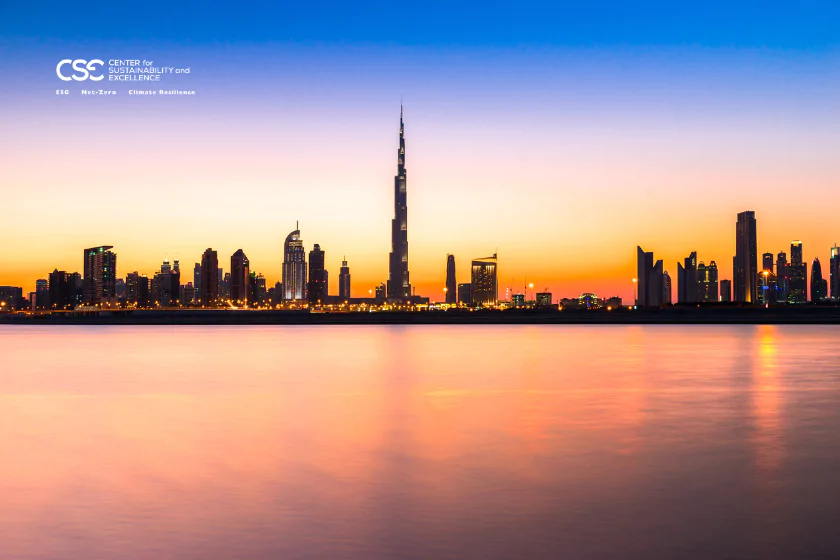The Evolving Landscape of Renewable Energy and ESG
The world is at a pivotal moment in its journey toward a more sustainable future. As the effects of climate change intensify and energy security becomes a pressing concern, countries and companies alike are stepping up their efforts to transition to cleaner, greener solutions. In 2024, this momentum was unmistakable, with record-breaking growth in renewable energy and a rising wave of ESG innovation, particularly across the Gulf region.
This blog takes you through that evolving journey: from global milestones to regional leadership and the inspiring innovations shaping the path forward.
-
A Record Year for Renewables
The world added an impressive 585 gigawatts (GW) of renewable energy capacity in 2024, marking a 15.1% year-on-year increase, according to the International Renewable Energy Agency (IRENA). This pushed the global total to a staggering 4,448 GW, with solar and wind dominating new additions—collectively responsible for 96.6% of the growth.
Yet, the celebration is tempered by urgency. Despite this achievement, the world remains behind on its 2030 goal to triple global renewable capacity. To get back on track, annual growth must now hit 16.6% through the end of the decade. The challenge is not just scale, but equity—while Asia, led by China, accounted for 64% of new capacity, Central America and the Caribbean saw just 3.2% of the total additions.
The world is moving—but not fast enough.
-
The Gulf’s Green Turn: Investment Meets Urgency
Against this backdrop, the Gulf Cooperation Council (GCC) nations are redefining their energy narrative. Long known for their oil wealth, these countries are now stepping into the climate spotlight, pledging $100 billion toward renewable energy projects by 2030.
This isn’t just a PR move—it’s a response to real climate risk. The region faces rising temperatures, severe water scarcity, and projected economic losses of up to 5% of GDP by 2050 if climate inaction persists. By investing in renewables, nuclear, and hydrogen, Gulf nations are aligning with global climate accords and turning vulnerability into opportunity.
Dr. Khalid bin Saeed al Amri of Oman underscored this shift, warning that inaction could cost the Gulf dearly, but also highlighting the potential for leadership in climate resilience.
-
Financial Integration: Building the Backbone of Green Economies
To support this transition, Gulf countries are also accelerating financial cooperation. At the forthcoming 30th meeting of GCC Financial Market Authorities, regional leaders will discuss cross-border capital integration—vital for funding large-scale clean energy projects and attracting sustainable investment.
Oman’s participation in the meeting reflects its intent to modernize its financial systems, foster investment transparency, and support green economic development through better regional coordination. These steps are laying the groundwork for a more robust, investment-ready GCC.
-
Corporate Champions: How Saudi Companies Are Redefining ESG
While governments lay the foundation, private companies are driving innovation. In Saudi Arabia, where Vision 2030 aims to diversify the economy and cut emissions, businesses are making ESG principles part of their DNA.
Take SAWACO Water Group. The company has overhauled its operations to improve water sustainability, using AI-powered energy management systems and a Remedium platform to track and reduce carbon emissions. Its brine minimization tech is pioneering sustainable desalination, protecting marine ecosystems while maximizing freshwater output.
Then there’s WAYAKIT, a biotech company led by Saudi women, transforming hygiene in aviation and transport. Their eco-friendly disinfectants eliminate 99.999% of pathogens in 30 seconds, using 93% biodegradable components, and the company’s blockchain-based ESG metrics prevent greenwashing by ensuring accountability.
These businesses are more than success stories—they are proof that profitability and sustainability can coexist. Their impact ripples across sectors, inspiring a new corporate culture grounded in innovation, equity, and responsibility.
The Road Ahead: From Ambition to Action
The past year has shown what’s possible when ambition meets action. But to truly achieve the targets of 2030—and ultimately net-zero by 2060—we need to maintain this momentum and broaden its base.
Here’s what must happen next:
- Accelerate renewable installations, especially in underrepresented regions.
- Foster regional financial integration to support scalable green investments.
- Promote ESG adoption across businesses of all sizes.
- Empower local innovation, particularly in emerging markets.
The path to a sustainable future is no longer theoretical—it’s being built right now, one policy, one project, and one innovation at a time. From global milestones to regional shifts and corporate leadership, the pieces are coming together.
Attend our upcoming GULF (GCC) | Certified Sustainability (ESG) Practitioner Program, Advanced Edition 2025, on 27,29 & 30, October to gain cutting-edge insights into the region’s rapidly growing green economy, with a focus on renewable energy, sustainable finance, and ESG innovation. The program also covers key global and EU sustainability legislation, equipping participants with the knowledge to navigate international compliance and drive impactful change across borders.







